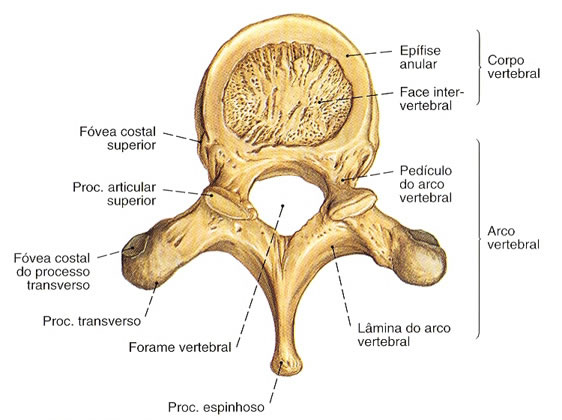General features
They are found in almost all vertebrae (with the exception of the 1st and 2nd cervical vertebrae) and serve as a means of differentiating them from the other bones of the skeleton.
All vertebrae have 7 Basic Elements :
1. Body : It is the largest part of the vertebra. It is single and medium and facing forward is represented by a cylindrical segment, presenting an upper and a lower face.
Function : Support.
2. Spinous Process : It is the part of the bony arch that lies medially and posteriorly.
Function : Movement.
3. Transverse Process : There are 2 lateral extensions, right and left, that project transversally on each side of the point where the pedicle meets the blade.
Function : Movement.
4. Articular Processes : There are four in number, two superior and two inferior. They are protrusions that are intended for the articulation of the vertebrae with each other.
Function : Obstruction.
5. Blades : There are two blades, one right and one left, that connect the spinous process to the transverse process.
Function : Protection.
6. Pedicles : These are narrower parts that connect the transverse process to the vertebral body.
Function : Protection.
7. Vertebral foramen : Located posterior to the body and limited laterally and posteriorly by the bony arch.
Function : Protection
| GENERAL CHARACTERISTICS OF THE VERTEBRAE |
 |
| Source: SOBOTTA, Johannes. Atlas of Human Anatomy. 21 ed. Rio de Janeiro: Guanabara Koogan, 2000. |
| Regional Features | Individual Characteristics |
